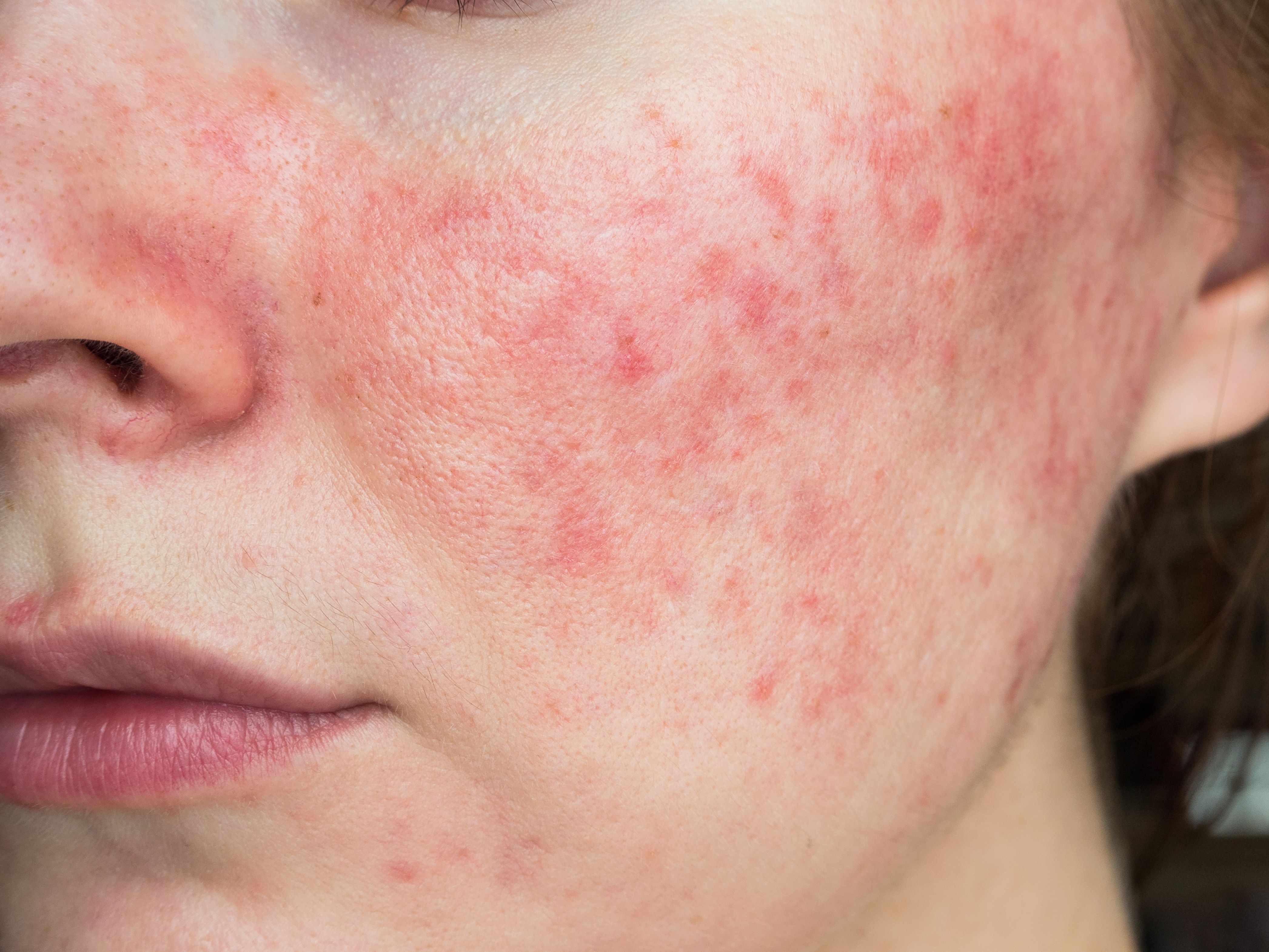- Case-Based Roundtable
- General Dermatology
- Eczema
- Chronic Hand Eczema
- Alopecia
- Aesthetics
- Vitiligo
- COVID-19
- Actinic Keratosis
- Precision Medicine and Biologics
- Rare Disease
- Wound Care
- Rosacea
- Psoriasis
- Psoriatic Arthritis
- Atopic Dermatitis
- Melasma
- NP and PA
- Skin Cancer
- Hidradenitis Suppurativa
- Drug Watch
- Pigmentary Disorders
- Acne
- Pediatric Dermatology
- Practice Management
- Prurigo Nodularis
- Buy-and-Bill
News
Article
PRP Injection is an Effective Standalone and Combination Therapy for Rosacea
Author(s):
Key Takeaways
- PRP injections demonstrated efficacy and safety in treating refractory rosacea, reducing symptoms like telangiectasia, erythema, and papules.
- The study involved five female patients, with PRP administered as monotherapy or combined with pulsed light or botulinum toxin.
Symptoms of rosacea and dependence on oral medication were reduced in all 5 case studies.
Image Credit: © Evgeniy Kalinovskiy - stock.adobe.com

Investigators evaluated the treatment method of platelet-rich plasma (PRP) injections with refractory rosacea.1 PRP, which promotes cell proliferation and antibacterial effects, was found to be a safe and effective alternative to oral therapies, especially when utilized with other treatment modalities.2
The study consisted of a case series of 5 patients along with a short literature review. All participants had previously not achieved full results and satisfaction with oral medications. About 8 mL of PRP was injected into the superficial dermis of the forehead, cheeks, and chin. Each patient received 1 to 3 sessions at 1-month intervals.
Clinical photos were taken at baseline and day 30, according to the National Rosacea Society Standard grading system. Scores between 0 and 16 were mild, 17 and 32 were moderate, and 33 and 48 were severe. Investigators also assessed PRP as a combination therapy with pulsed light therapy or botulinum toxin injections in certain cases.
The PRP therapy demonstrated strong efficacy and safety among all participants when used as monotherapy or in conjunction with other treatments. All patients saw a decrease in telangiectasia, erythema, and papules at the 30-day mark compared to baseline. Patients 3 and 5 saw the greatest decrease in scores, with disease states reducing from moderate to mild.
The first case revolves around a 48-year-old woman who had erythematotelangiectatic rosacea for 2 years. Papules subsided after minocycline hydrochloride treatment but the most significant improvement in erythema occurred after 2 rounds of PRP injections.
The next case was a 35-year-old woman with a 2-year history of persistent bilateral cheek vascular dilation and erythematotelangiectatic rosacea. This patient utilized a combination therapy of 3 rounds of PRP and 2 sessions of delicate pulsed light therapy at a wavelength of 500 nm. Considerable enhancement in skin rejuvenation and vascular reduction was reached.
The third patient was a 49-year-old woman with a 1-year history of papulopustular rosacea and could not take systemic medication for it. PRP was administered for 3 rounds and the patient saw significant improvement in skin lesions with no recurrence for 6 months.
The next case focused on a 36-year-old woman with papulopustular rosacea, who had not found relief with long-term oral methylprednisolone. This patient utilized a round of PRP injection, Botox therapy, and 2 rounds of delicate pulsed light therapy at a wavelength of 500 nm. This unique treatment regimen offered significant improvement for the patient and she eventually discontinued the oral medication.
The final case was that of a 32-year-old woman with a 2-year history of papulopustular rosacea. She had previously relied on oral minocycline hydrochloride and hydroxychloroquine sulfate but found recurrent symptoms whenever she discontinued use. After 2 rounds of PRP injections, her rash, erythema, and pustules improved greatly.
The small sample size and lack of male patient representation may be considered limitations of the study, thus affecting the stability of the results. Further studies with a control group and a longer follow-up period can better assess PRP’s clinical efficacy.
“This emphasizes the need for personalized and multidisciplinary approaches to rosacea management, including the exploration of alternative therapies and the development of tailored treatment plans to address the individual needs of patients with this chronic skin disease,” the authors wrote. “Moreover, this therapeutic method is relatively safe and offers a gentler and more sustainable treatment option for patients with rosacea.”
References
1. Pang X, Tan L, Zhao B, Kong X, Wang H, Hou S. Successful Treatment of Complex and Refractory Rosacea Using Platelet-Rich Plasma Injection Therapy: Case Series and Review of the Literature. J Cosmet Dermatol. 2025;24(2):e70031. doi:10.1111/jocd.70031
2. Two AM, Wu W, Gallo RL, Hata TR. Rosacea: part I. Introduction, categorization, histology, pathogenesis, and risk factors. J Am Acad Dermatol. 2015;72(5):749-760. doi:10.1016/j.jaad.2014.08.028






